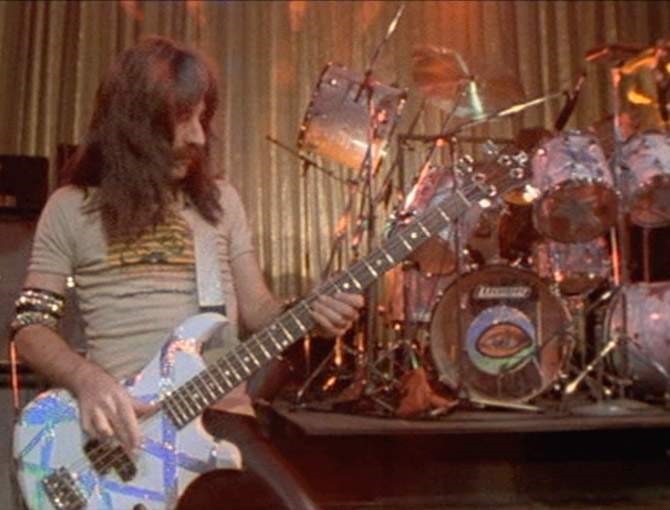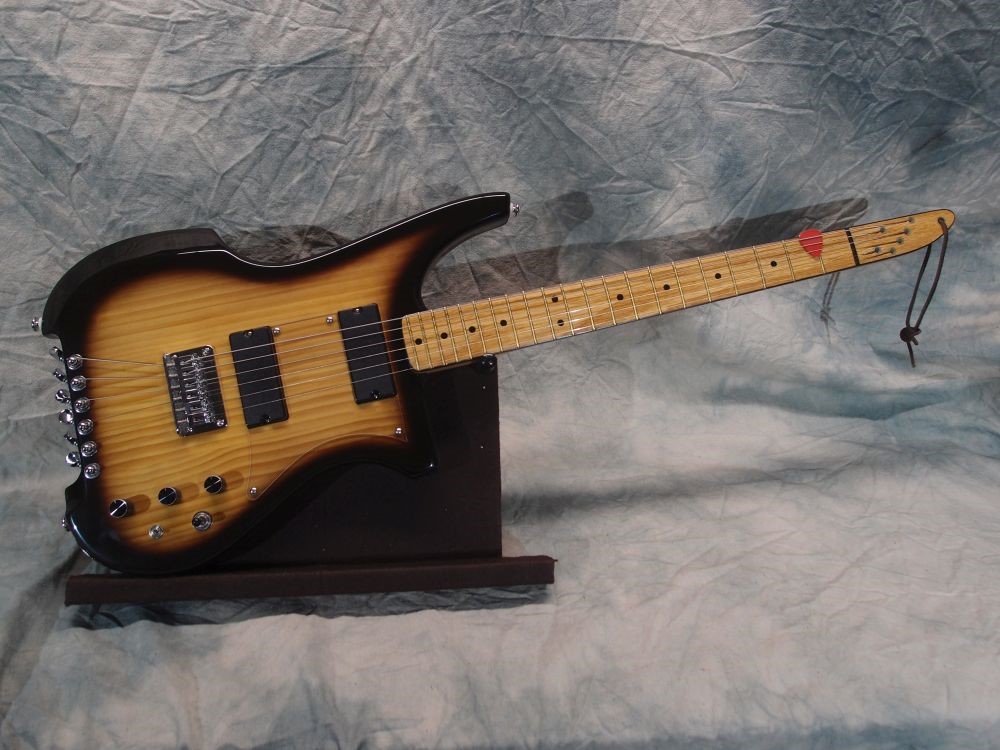Osprey Bass (BC Rich Eagle) (9/10)
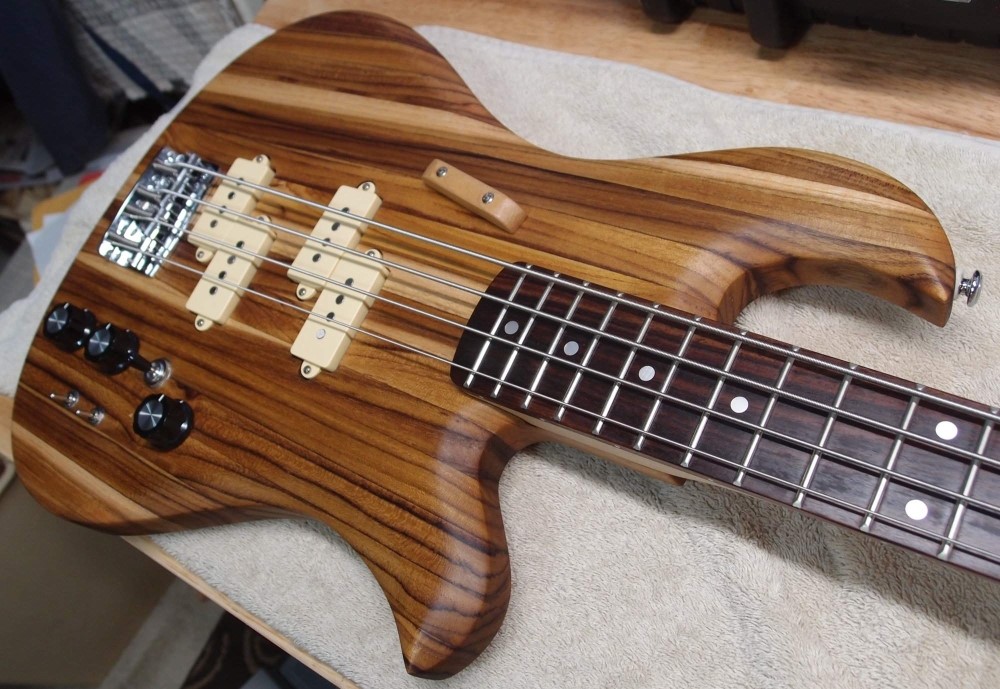
My edges are softer and more comfortable than the original. The chamfers were surprisingly easy to do with the hand-held belt sander. That's a tool I've been using a lot more lately. The thumbrest is a maple piece I've had lying around for a long time. The bridge is a Gotoh. Note the strap button on the horn - mounted straight, not perpendicular to the curve. The switches are in their normal positions. I love those big silver-topped knobs.
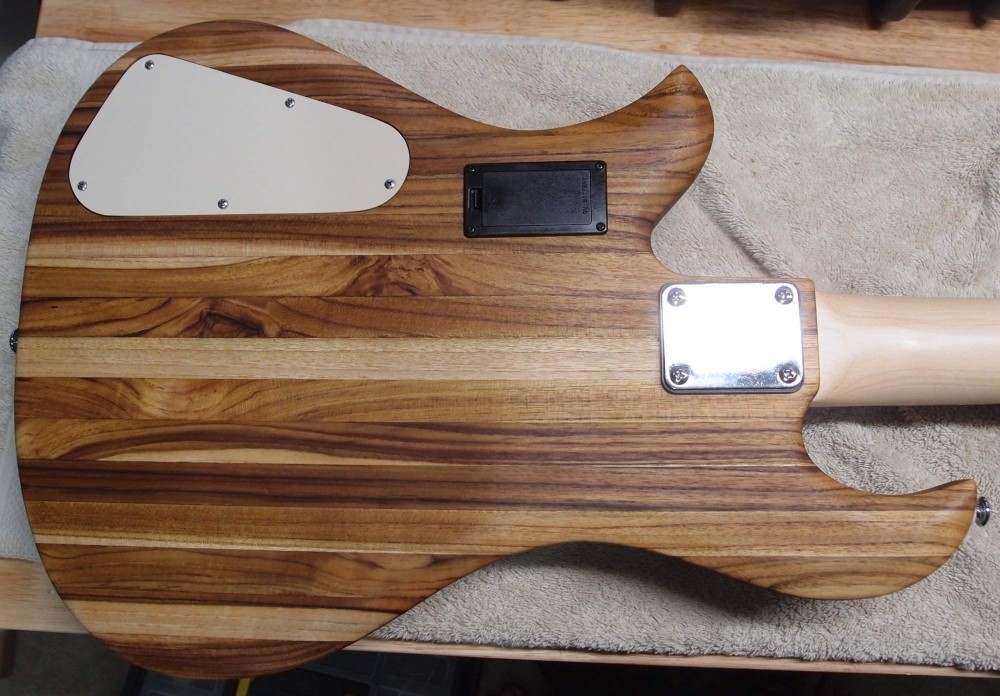
The control cover is a piece of plastic leftover from a bathroom remodeling. I have a pile of this stuff, it is going to get used. The battery box is a cheapie from eBay. It has contacts inside, rather than a clip, so that you can easily install and remove the battery. Always take the battery out when you are not playing it - nowadays battery quality is very bad and they all leak.
The neck is a 32" bolt-on paddle-head from Eden; the original was neck-through. I am very impressed with the quality of this $55 piece, and I will be using them again. 32" is my favorite scale. Much better playability than 34", without actually feeling short. 32 should be the standard bass scale, not 34.
One difference between my bass and a real Eagle is that the original has a two-octave neck, whereas mine has an off-the-shelf 21-fret neck. The neck of the original juts way out there, it must balance very badly. Mine is shorter and set more into the body. The lower cutout on my body is a bit deeper than the original, which compensates for high fret access. That is actually the happy result of a problem cutting that curve on a scroll saw. Low fret access is superb - the reach feels like a guitar, not a bass.
Sadly, Eden did not listen to me when I explained to them about 32" conversion necks. A conversion neck is made to install to a stock 34" body without having to move the bridge. This neck won't do that, but it is still good for custom builds like this. ( On a conversion neck, the 20th fret is undercut about 3/8", so it overhangs the body like a 22 fret Strat neck. I suppose you could do that to one of these. )

And I still have this nice little 9x9" cutting board left over, as well as some useful-sized scraps of teak that I saved for someday. I will never again torture myself by routing two tight P-pup cavities.
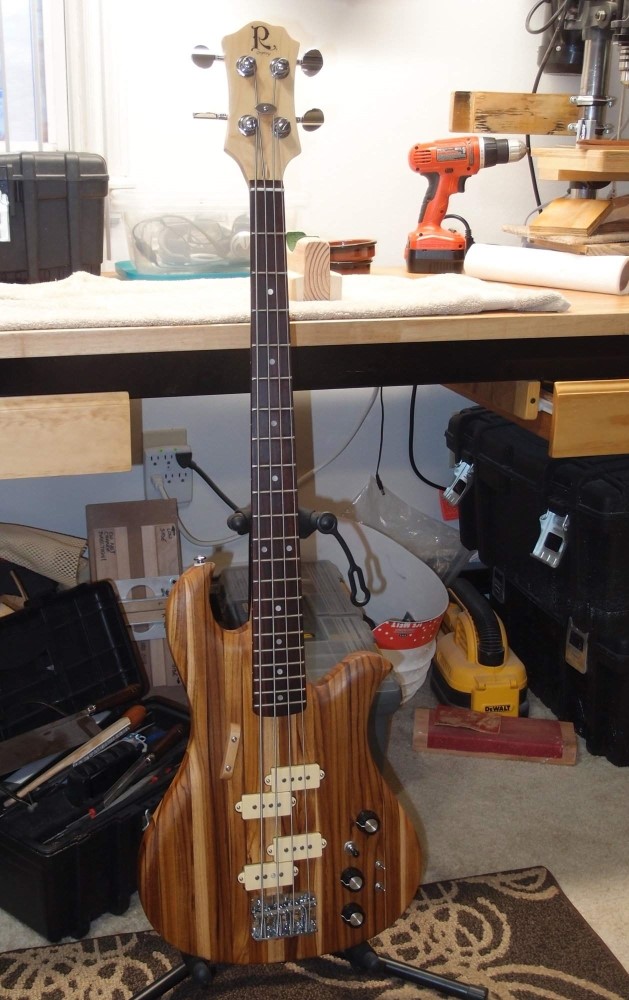
A parting shot in front of the workbench. The final weight is 8.6 pounds. Although teak is a rather heavy wood, the 1.5" thickness kept the weight reasonable. If it was regulation thickness, it would be over 10 pounds.
This is a very comfortable and well-balanced instrument. I have not made any adjustments yet, and it plays and sounds great. I'll give it a few weeks to settle in, and then do a proper setup. Unplugged, it has a lively bright sound, but that is more the brand-new strings than any tonewood nonsense. The strings are my usual go-to d'Addario long-scale nickel-plated, nothing exotic or expensive.
With the free cutting board body blank from Home Depot, and a lot of parts I already had, out-of-pocket cost is around $100. If you had to buy everything, you could build this for well under $300 ... with hand tools, on your kitchen table. All in all, I'd rather have my "Osprey" than a real Eagle ( which is no longer in production. )
This makes me wonder what I could do with a bunch of yellow pine 1x2s and some wood glue. I've always wanted to try a pine body, but white pine is much too soft, even softer than basswood. Yellow pine is harder than some hardwoods, including poplar and alder, and would take an oiled finish like this very nicely. Yellow pine is also stronger than many hardwoods, and would make a fine neck as well. Maybe I will build a Mockingbird.
For reference, this was my model:
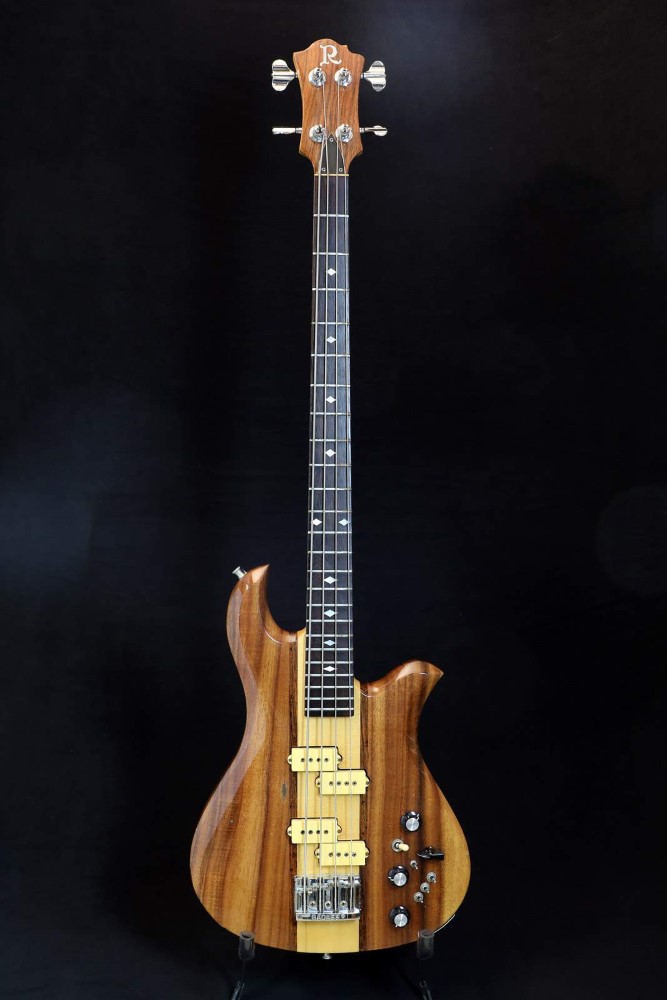
Someone was selling this, and I copped a bunch of useful images from their ad. You can see where I took a lot of styling cues, like double cream-colored P-pickups. BC Rich also used other controls, pickups, knobs, etc, but for me, this is the classic layout. For some reason, this one doesn't use the reversed installation for the pickups, which was something of a BC Rich trademark, and I did use it.
I have fewer little switches, and I got rid of the ugly chickenhead knob, but kept the overall layout. Two of these switches control the pickup modes individually. I combined them into one switch. I did this because if you switch just one pickup into parallel, the series one will drown it out, so you really want to switch them together.
Another of the little switches here is a phase switch, which is of slight use on a guitar, and none at all on a bass. My series/parallel switch is far more useful. The fourth switch is power for the preamp. The knobs are passive volume, preamp volume, and passive tone. The chickenhead controlled some sort of tone shaping in the preamp, no doubt very crude - remember, this was the seventies, forty years ago.
I don't care for Badass bridges. They're ok, but really no better than a standard Fender bridge, let alone the Gotoh I used. And they are way overpriced for a piece of zinc; I'd rather use steel.
I think my teak cutting board compares pretty well with this Koa (?) / maple glue-up. Mine has a shorter-scale neck with fewer frets. I have to believe that this thing has serious balance and reach issues; I'll bet mine plays much better. Finally, look at the shape and angle of the strap button on the horn. Looks like a disaster waiting to happen.
Classic BC Riches were hand-made in California, and probably no two are exactly alike. Later, production went to Japan - the 'NJ' years. Japanese precision is incredible, I would expect every one to be within a millimeter of every other one. Today they are made somewhere in Asia. They're probably Corts, like everything else nowadays. That's not to say they aren't good guitars, but they have little in common with what Bernie Rico was building in his garage.
Of course, my greatest inspiration of all was Sir Derek Smalls OBE.
